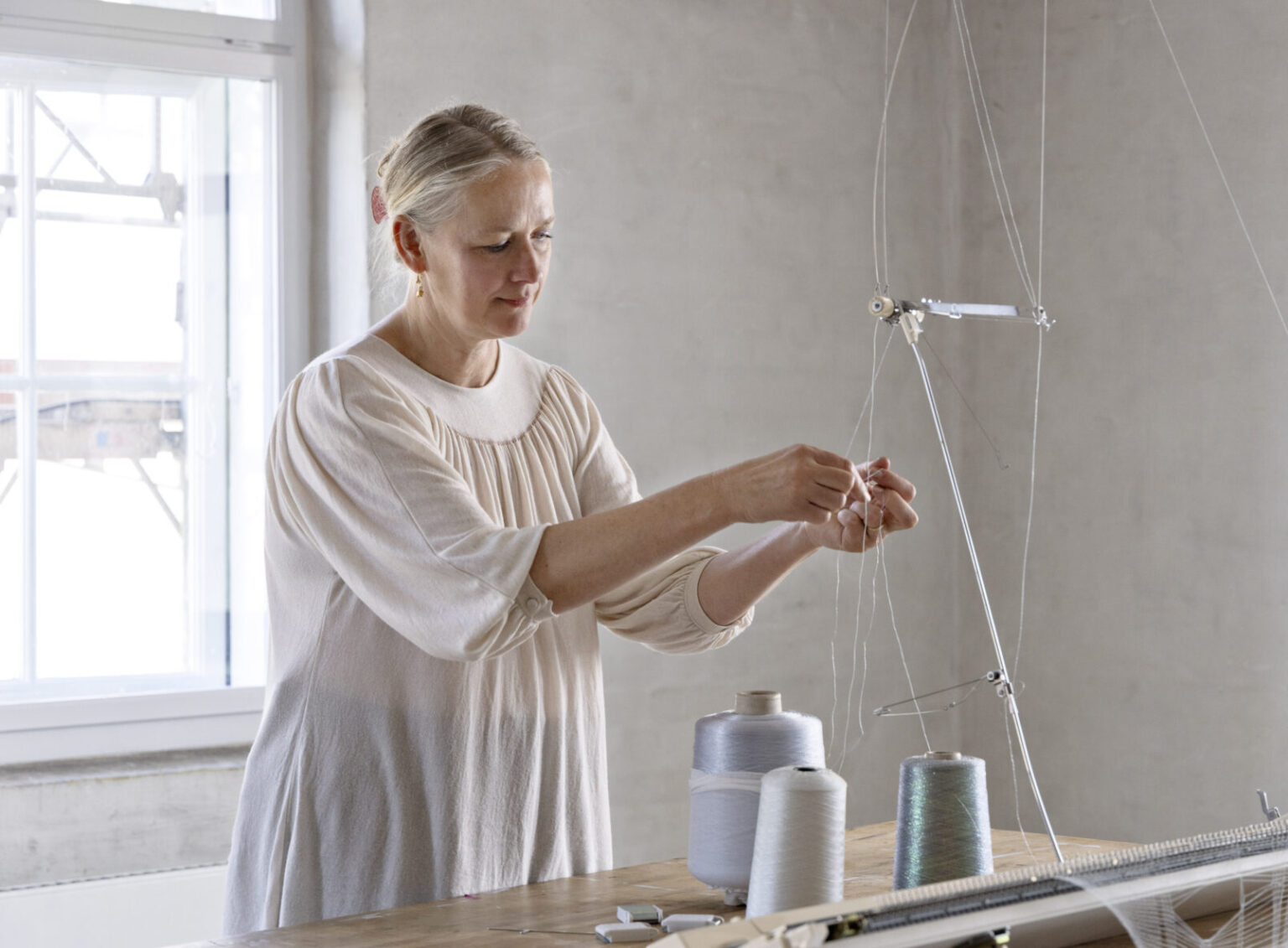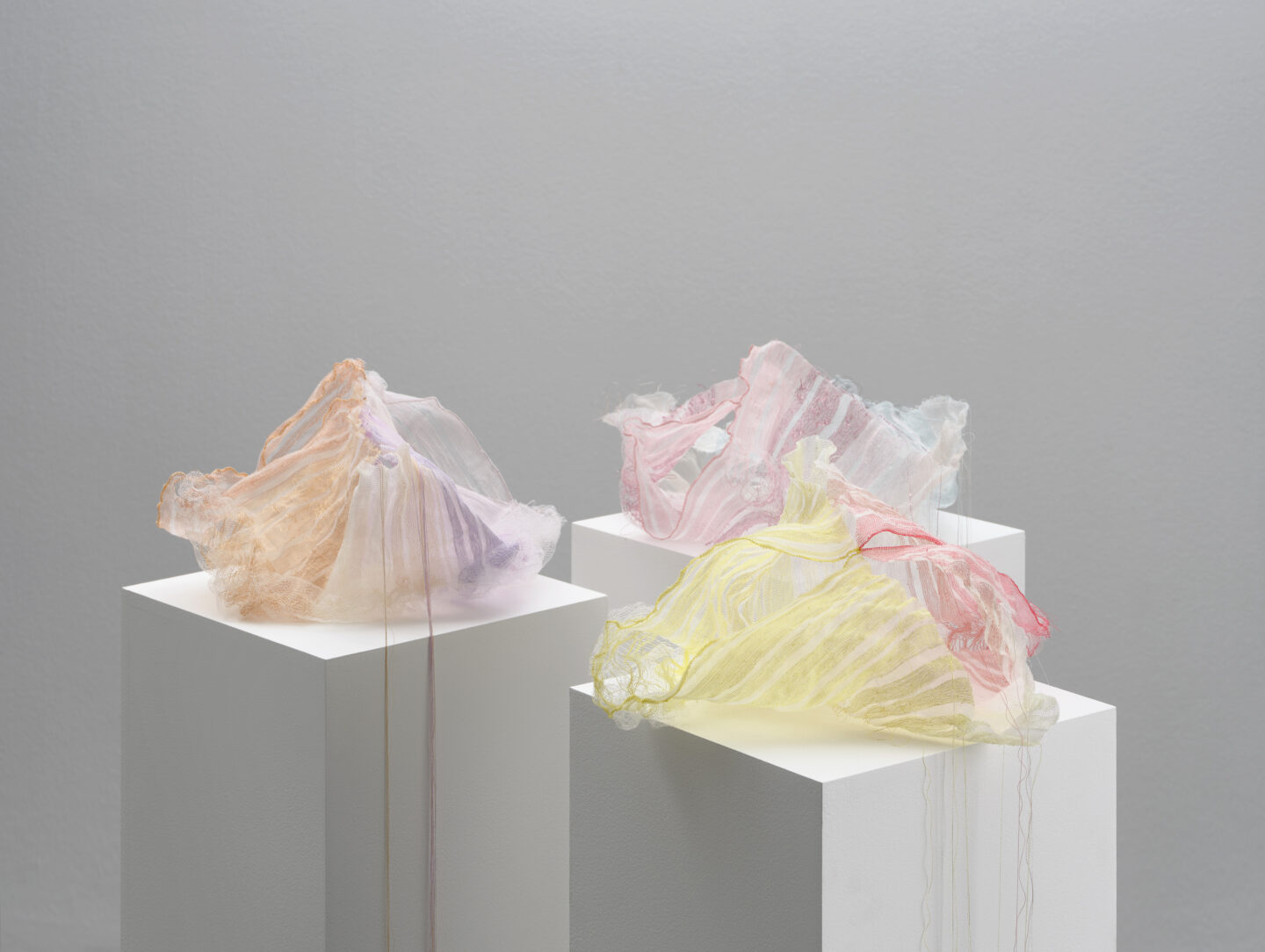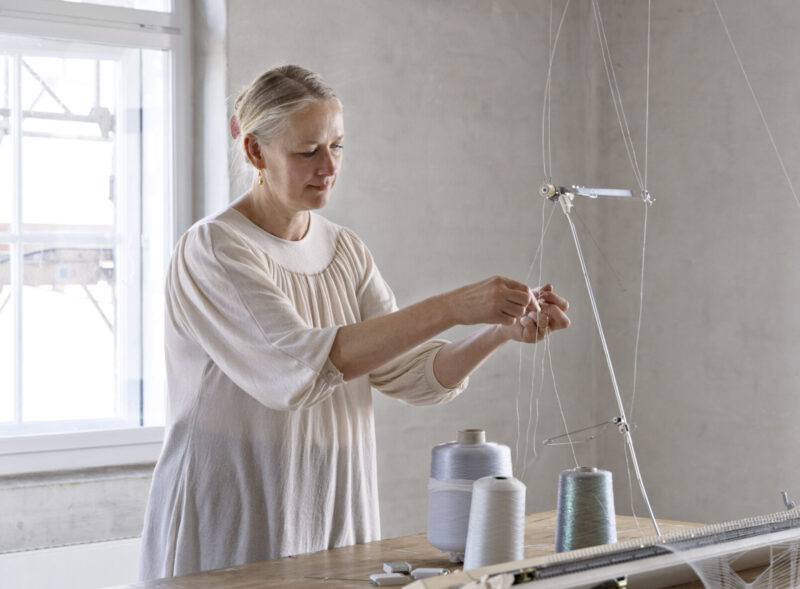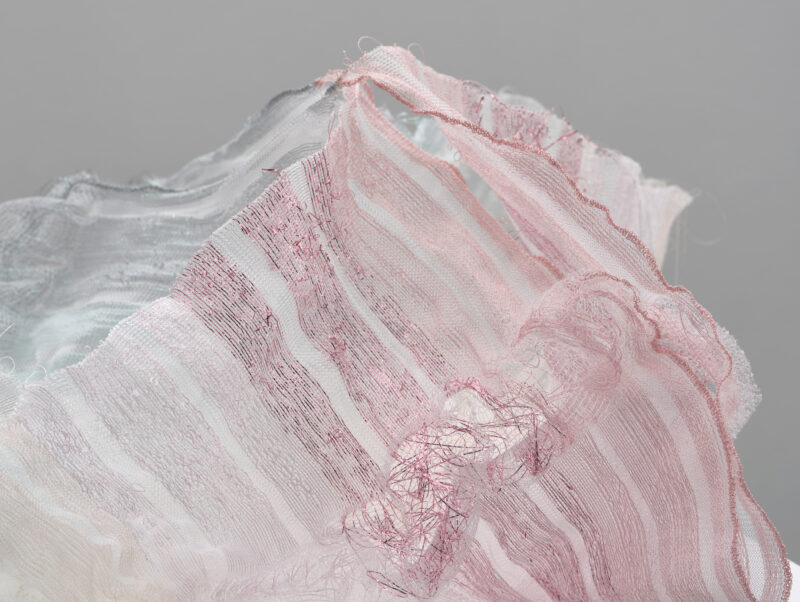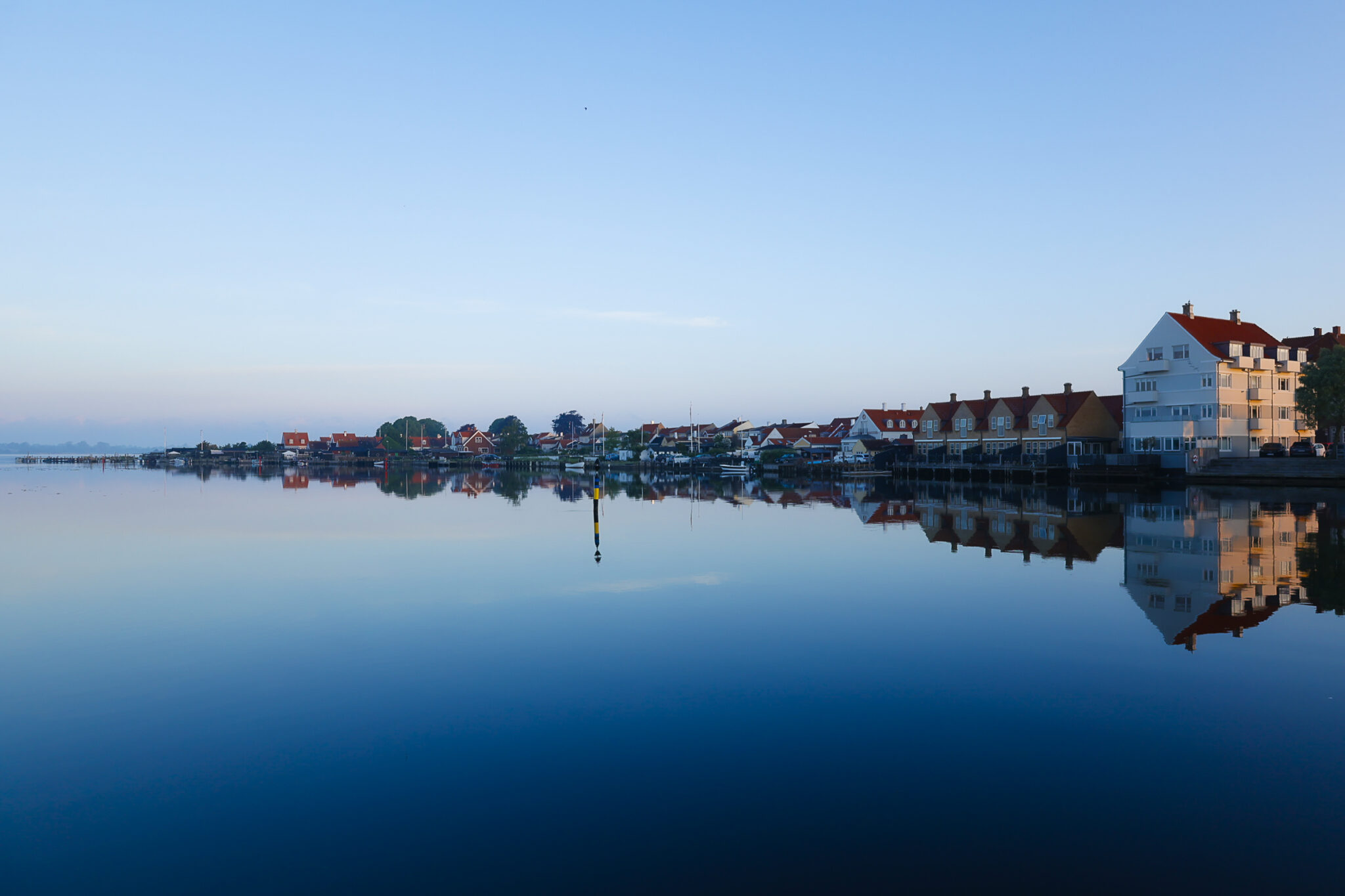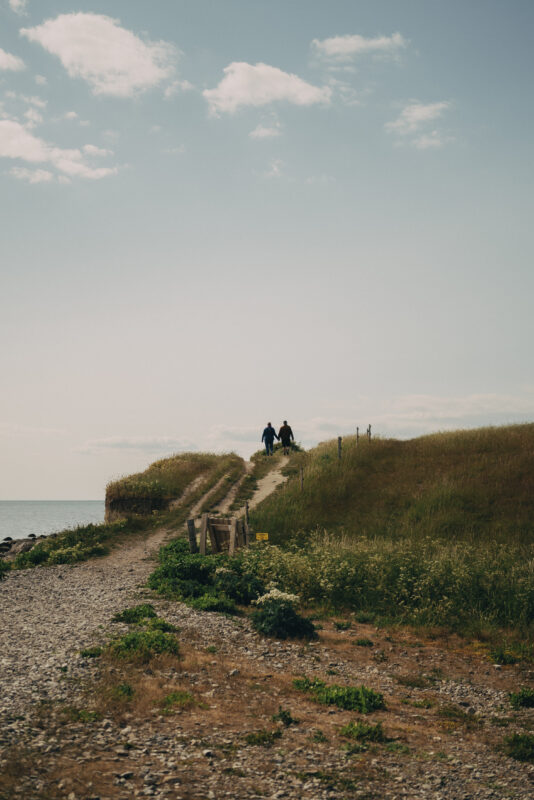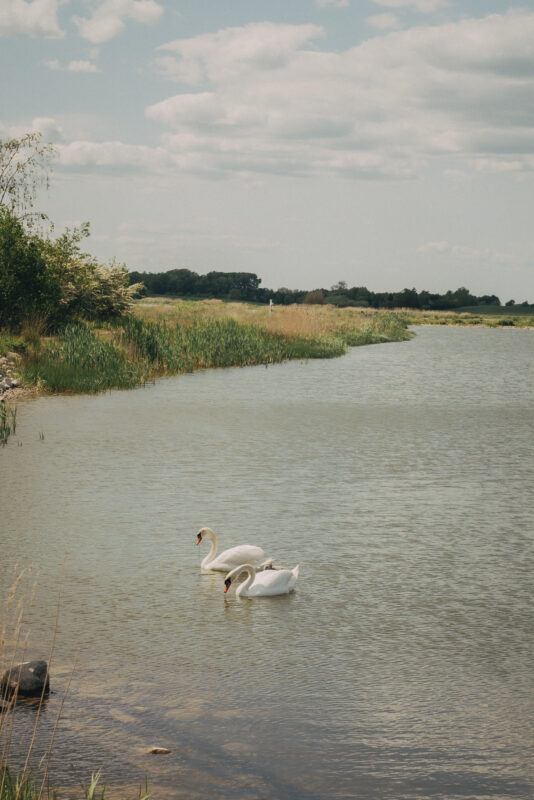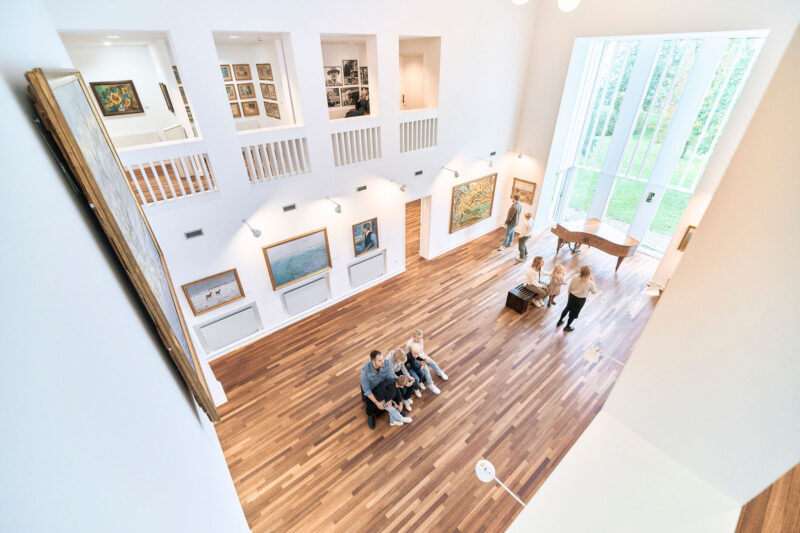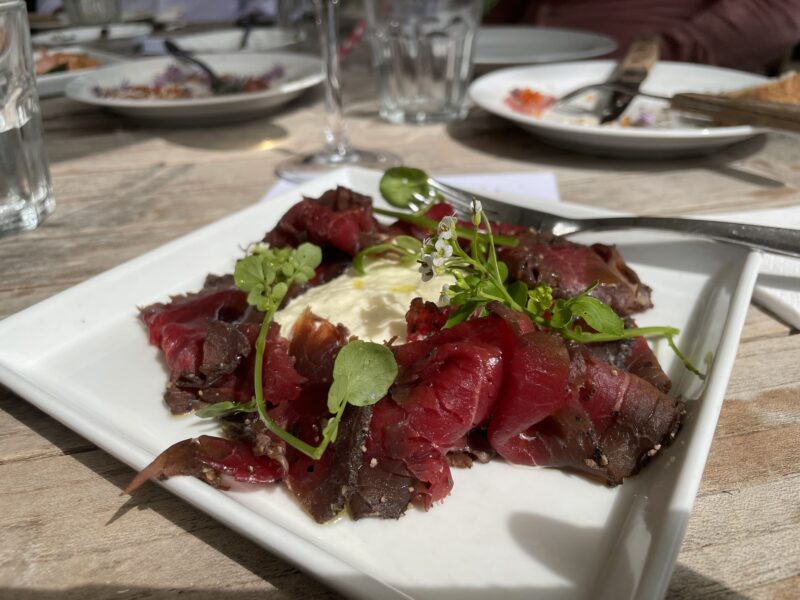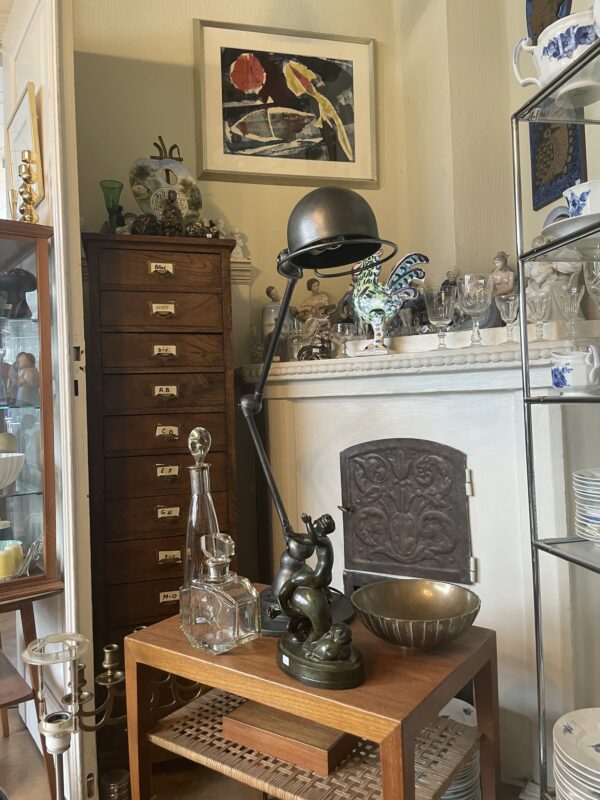From her studio near the shore in Kerteminde, Iben Høj knits space into being. Fine threads—sometimes as few as two, sometimes five—are woven into translucent forms that float, stretch, or seem to breathe with the room. Light filters through them like sea mist or dried leaf veins, revealing structures that feel both delicate and enduring.
Her newest works, dipped in porcelain clay, push this balance further: soft mesh becomes brittle, lace turns into delicate ceramic grids. Inspired by the shifting coastline, these pieces preserve the detail of hand-knitting in a fragile, lasting form.
© Anders Sune Berg
Which place do you currently call home and where do you work on your projects?
I live and work in Kerteminde, a small seaside town on the island of Funen in Denmark. My house and studio are situated very near the beach, with the forest nearby—less than two hours’ drive from Copenhagen.
Where is your studio located & how does it look?
My studio is located in my house in Kerteminde, just 80 metres from the beach. It is one of the larger rooms in the house and is situated in a corner with windows on two sides. This is where I keep all my machines and yarns and develop my ideas and new pieces.
© Courtesy of the artist
Are there any projects that are personally important to you—whether recently completed or currently in progress?
Yes, my current project—dipping knitted textiles in porcelain clay—is very important to me. I’m exploring what happens when soft, pliable structures are transformed into something brittle and potentially unstable. It’s a continuation of my interest in fragility and strength: how something delicate, like a knitted thread, can become architectural, even monumental. I’m fascinated by how these clay-dipped forms challenge our expectations of stability—some may even crumble—and how that impermanence becomes part of the work. It’s a new way for me to shape knitted space and rethink structure through a different material lens.
© Courtesy of the artist
© Anders Sune Berg
© Anders Sune Berg
Do you have a favourite place in your area where you like to relax and linger?
I favor a stroll along the shore collecting shells and pebbles. Or a longer walk through the forest near our home. Sometimes I drive to the very tip of Funen (Fynshoved) to go for a walk there. It is very special with sea at all sides and therefore the views are spectacular, and the light notoriously sought after. This quality is one of the reasons why the area was very attractive to artists.
© Photographer Jennie Rödin – Lillestranden Kerteminde
Are there any urgent political issues or problems in your region?
I live a stone’s throw away from the sea, in a town with extended coastline, so naturally we are affected whenever we have a storm, heavy rain or rising tide. This is the most visible effect of the climate change in the region where I live. It is frustrating that nothing really happens, politically we all acknowledge that there is a problem, but the government is not acting. We need to react both to better our footprint, but also to protect and help against the effects of the climate change already there.
In your opinion, what has developed well in the last 5 years—and what has not?
I live in a very beautiful, old town with some authentic areas and cultural gems. I am concerned that the trend is to build and build, rather than to preserve. Especially the authentic fishermen’s sheds and small bathhouses along the shore are in danger of disappearing with time.
On the other hand, a beautiful nature resort—Sybergland, named after a renowned local artist Fritz Syberg—has been re-established. It is an area that was previously a bird resort with a lot of wetlands, where the local artists went to paint the landscape and animal life. A restoration back to its former qualities has added great value to our town, and it is wonderful to take long walks around the re-established lakes.
© VisitFyn Fyns Hoved – fotogfra 24 Copenhagen
© Sybergland – fotograf 24Copenhagen
Do you know a hidden gem when it comes to local manufacturers—whether it’s arts and crafts, sustainable products or food?
Amazingly, we have a local vineyard in Kerteminde—Stokkebye Wine, which is worth a visit. Generally, there is quite a few local manufacturers of delicacies like cherries from Selleberg, or various lovely juices from Nybro. But I would probably recommend that you simply buy fresh fjord shrimps or lobster from the local fishermen in the harbor.
Is there anything particulary innovative in your region? Also in comparison to other places you have already visited?
My town has quite a strong community supporting cultural activities. We have a small cinema entirely managed and driven by volunteers. Also, we have a wonderful art museum, Johannes Larsen Museet, based around the villa and oeuvre of the artist. And I love that during the Summer, you can buy local produce from roadside stalls.
© Johannes Larsen Museet
Do you have a secret restaurant tip that you would like to share with us?
If you take the trip to Fynshoved via Hindsholm you can check out Røgeri Hindsholm with freshly prepared tapas Danish style. A brilliant restaurant for fish is the local Rudolf Mathis.
And if you grab your lunch at the café in Johannes Larsen Museet do not forget to try the snaps. They make the flavors themselves based on original recipes from the artist – his own favorite was a taste of burnt butter! I prefer the lemon or lavender ones.
© Roegeri Hindsholm
Is there a local shop whose products are only available in your region?
Visit Den Gamle Købmandsgård for local produce. If you like antiques, you must visit Sarkel Antique for rare paintings by the well-known Funen-based artists from the early 1900s – I would particularly hunt for the female artists Christine Swane and Alhed Larsen. Also look out for early, unique furniture once locally produced at the defunct Kolds Savværk (sawmill)by the likes of Nanna Ditzel or Peder Moos, and colourful ceramics from the descendent of Fritz and Anna Syberg, Lars Syberg.
© Sarkel antique
What are your 3 favourite apps that you use every day and couldn’t live without?
I am not a big app person, but I use my phone’s Photo app, Instagram, and Messenger.
Do you have any favourite newspaper or online magazines? And how do you keep up to date with politics or social and cultural issues?
I am not a big fan of online media—I am much more into the object, and the sensuous feeling of a book, a newspaper, or a magazine. I read the Danish broadsheet Weekendavisen, the newspaper Politiken (Danish), and favourite magazines such as The Gentlewoman, Eurowoman (Danish) and Vogue UK. I keep myself updated on political issues by listening to the news.
© Fyns Hoved
Imagine you could be mayor for a year—what would you change?
I would introduce a cultural masterplan for preserving the unique fishermen’s sheds, as well as the small bathhouses along the shore. The same goes for the authentic centre of the town and the outer residential areas built from the 30s to the 50s. I do not see the preservation of heritage and authenticity as a resistance of development, rather as an acknowledgement of what is special about our place. Also, I would take a close look at the problems we face with the entire hydraulic system—water from below, water from above and water from the sea, and make a visionary, long-term plan with recreative elements and landscape enhancing qualities. Something, which would be a future asset to our area, and to everybody living here or visiting.
One last question: If you could choose another place to live—regardless of financial or time constraints—which one would you choose?
I love where I live! But considering the forecast of rising sea levels and temperatures I would probably choose a fjeld cabin on the fjordside in breathtakingly beautiful Norway during the Summer. And a hillside retreat in the Tuscan area near Florence in the Winter—with its abundance of cultural heritage and rich and proud tradition for arts and crafts, and the wonderful Tuscan produce and cooking, both honest, based on local produce and super tasty.
